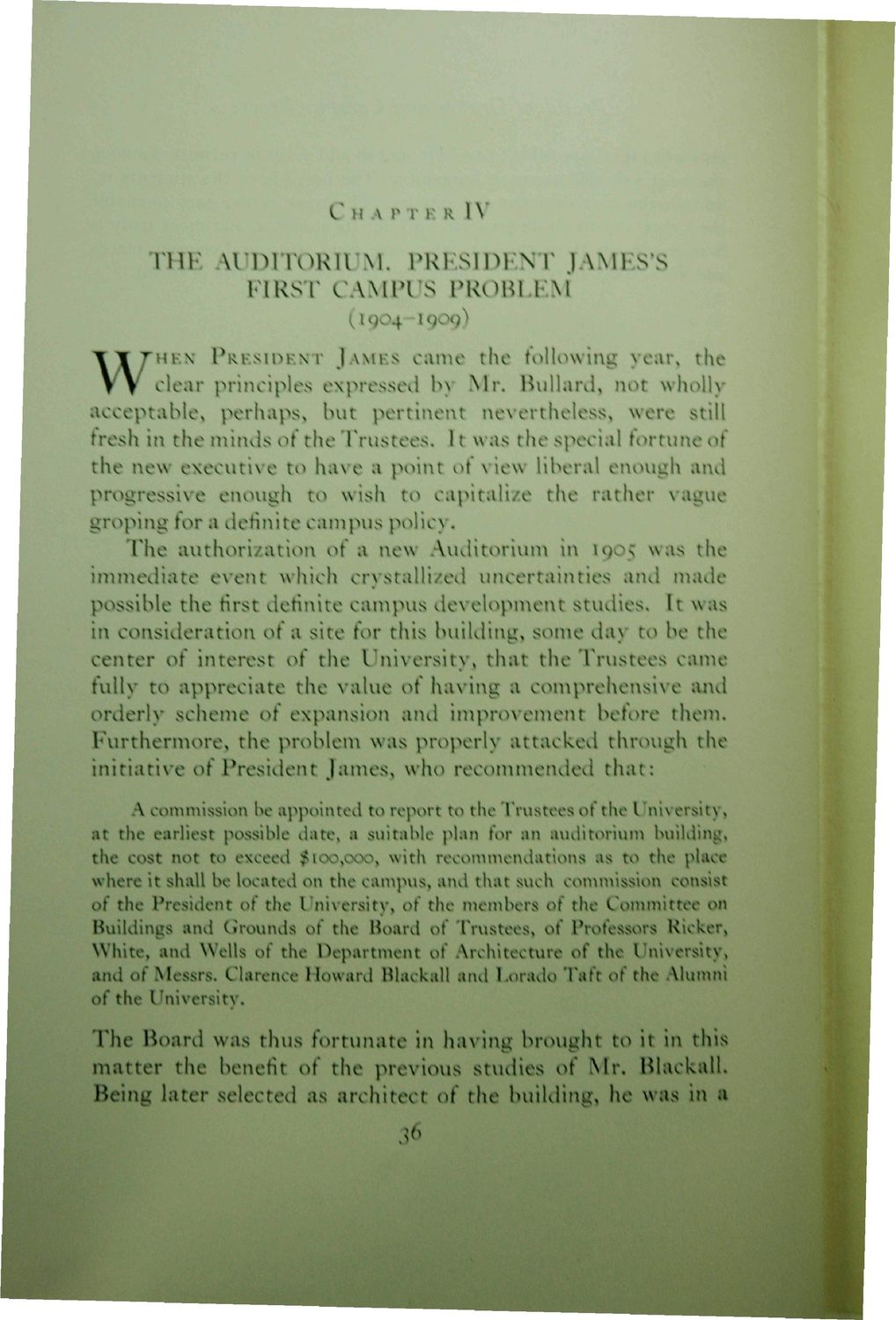| |
| |
Caption: Book - 30 Year Master Plan (Tilton & O'Donnell)
This is a reduced-resolution page image for fast online browsing.

EXTRACTED TEXT FROM PAGE:
C H A P T E R IV THE AUDITORIUM, PRESIDENT JAMES'S FIRST CAMPUS PROBLEM (1904-1909) came the following year, the clear principles expressed by Mr. Bullard, not wholly acceptable> perhaps, but pertinent nevertheless, were still fresh in the minds of the Trustees. It was the special fortune of the new executive to have a point of view liberal enough and progressive enough to wish to capitalize the rather vague groping tor a definite campus policy. The authorization of a new Auditorium in 1905 was the immediate event which crystallized uncertainties and made possible the first definite campus development studies. It was in consideration of a site for this building, some day to be the center of interest of the University, that the Trustees came fully to appreciate the value of having a comprehensive and orderly scheme of expansion and improvement before them. Furthermore, the problem was properly attacked through the initiative of President James, who recommended that: W HEN PRESIDENT JAMES A commission be appointed to report to the Trustees of the University, at the earliest possible date, a suitable plan for an auditorium building, the cost not to exceed $100,000, with recommendations as to the place where it shall be located on the campus, and that such commission consist of the President of the University, of the members of the Committee on Buildings and Grounds of the Board of Trustees, of Professors Ricker, White, and Wells of the Department of Architecture of the University, and of Messrs. Clarence Howard Blackall and Lorado Taft of the Alumni of the University. The Board was thus fortunate in having brought to it in this matter the benefit of the previous studies of Mr. Blackall* Being later selected as architect of the building, he was in a 36
| |